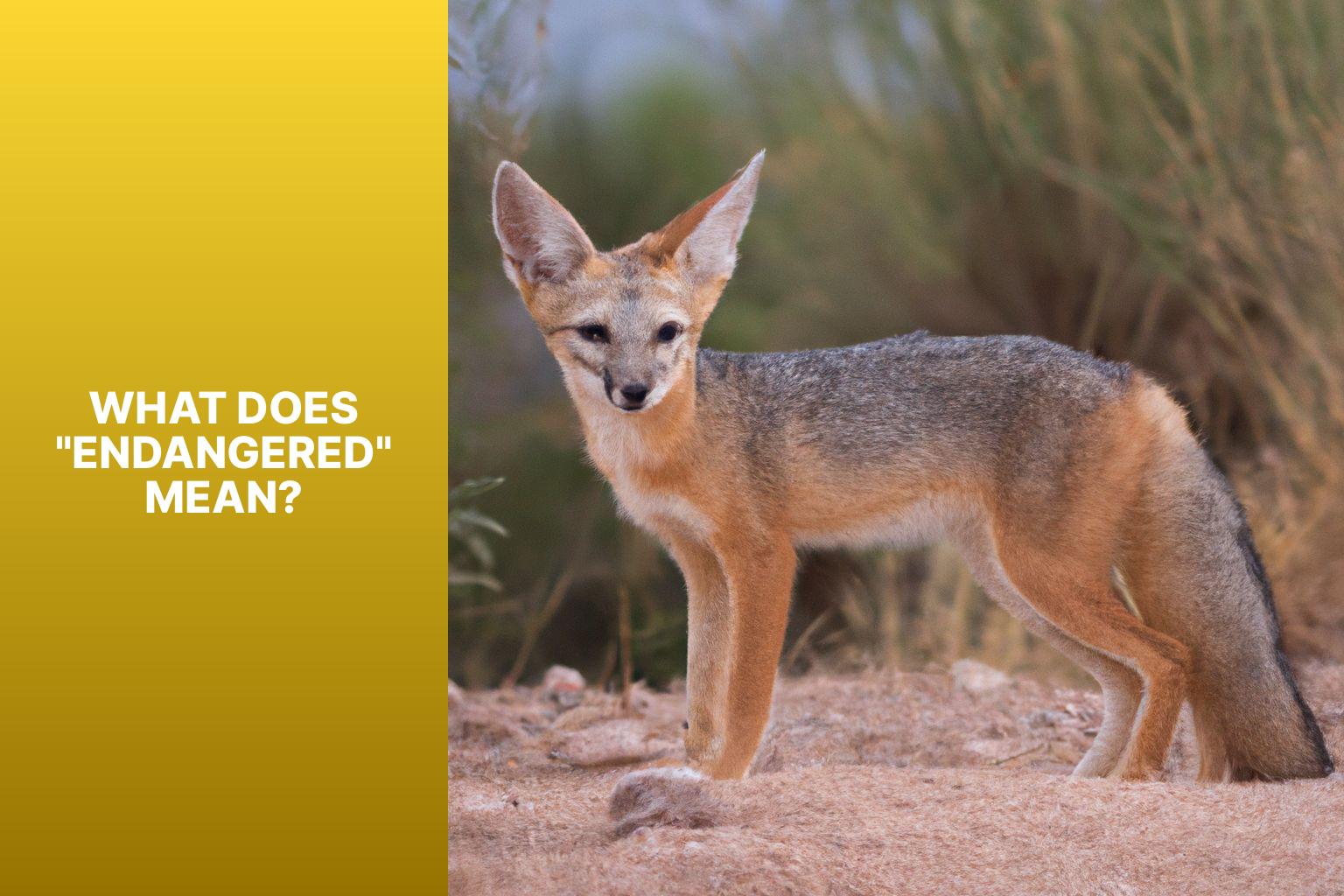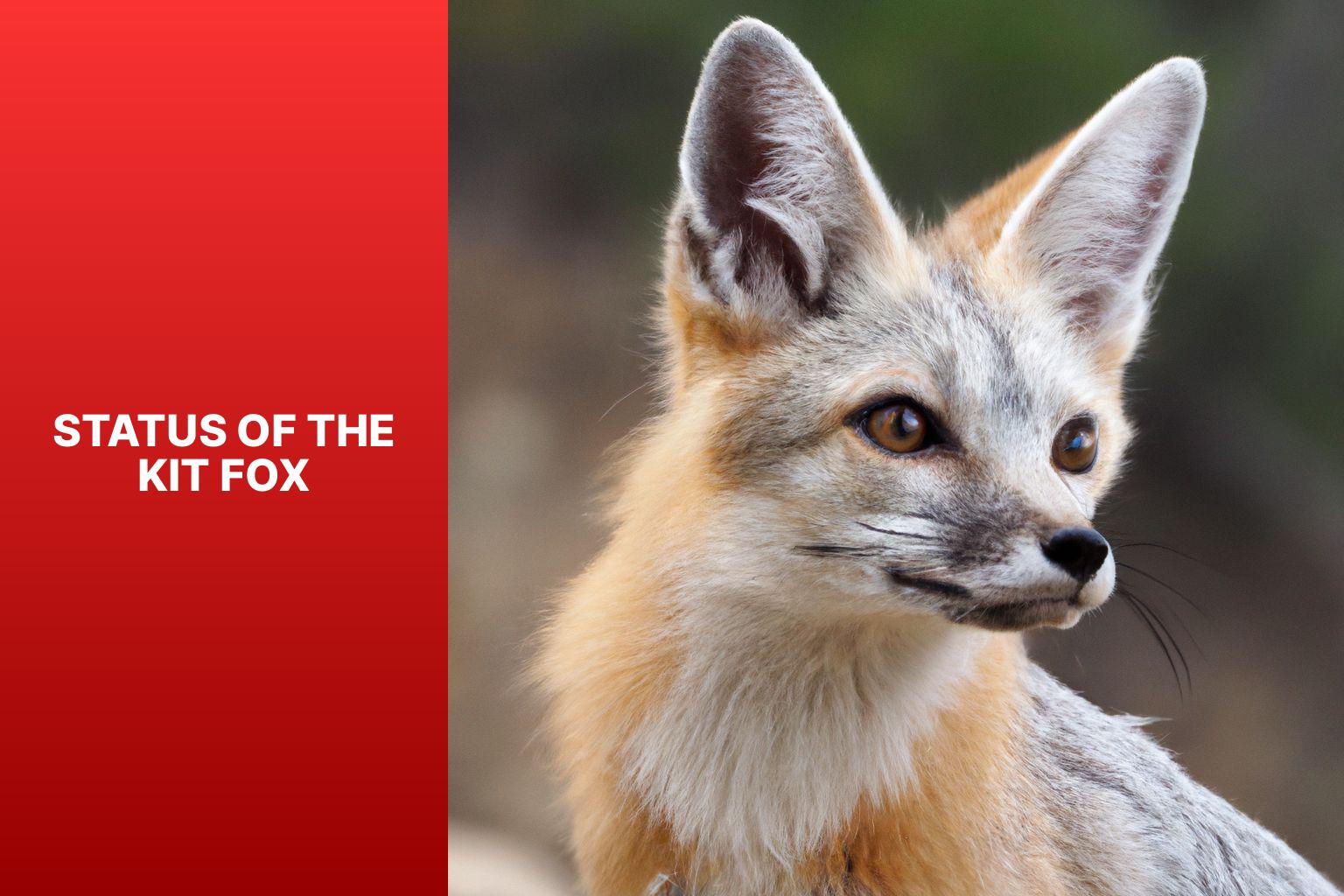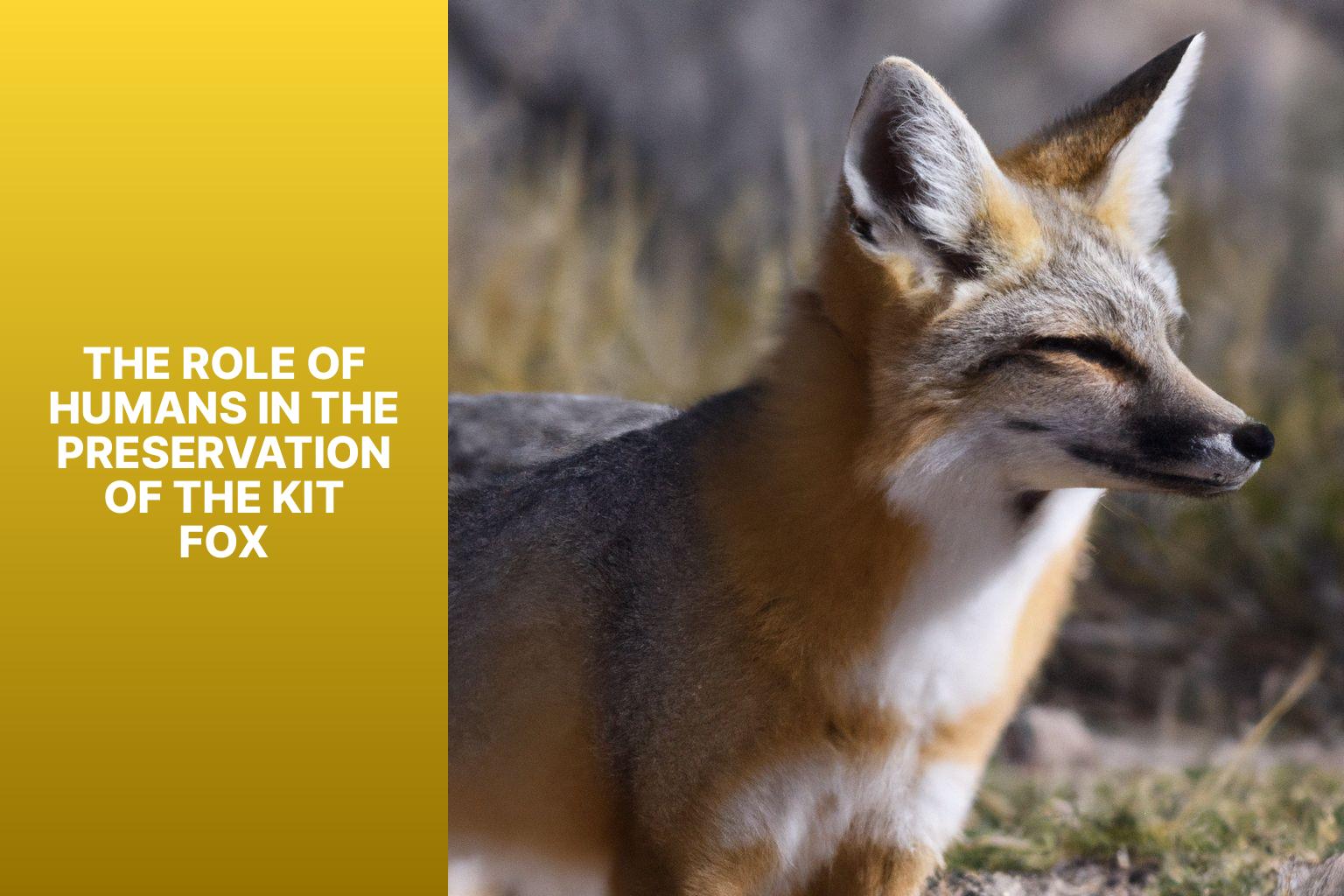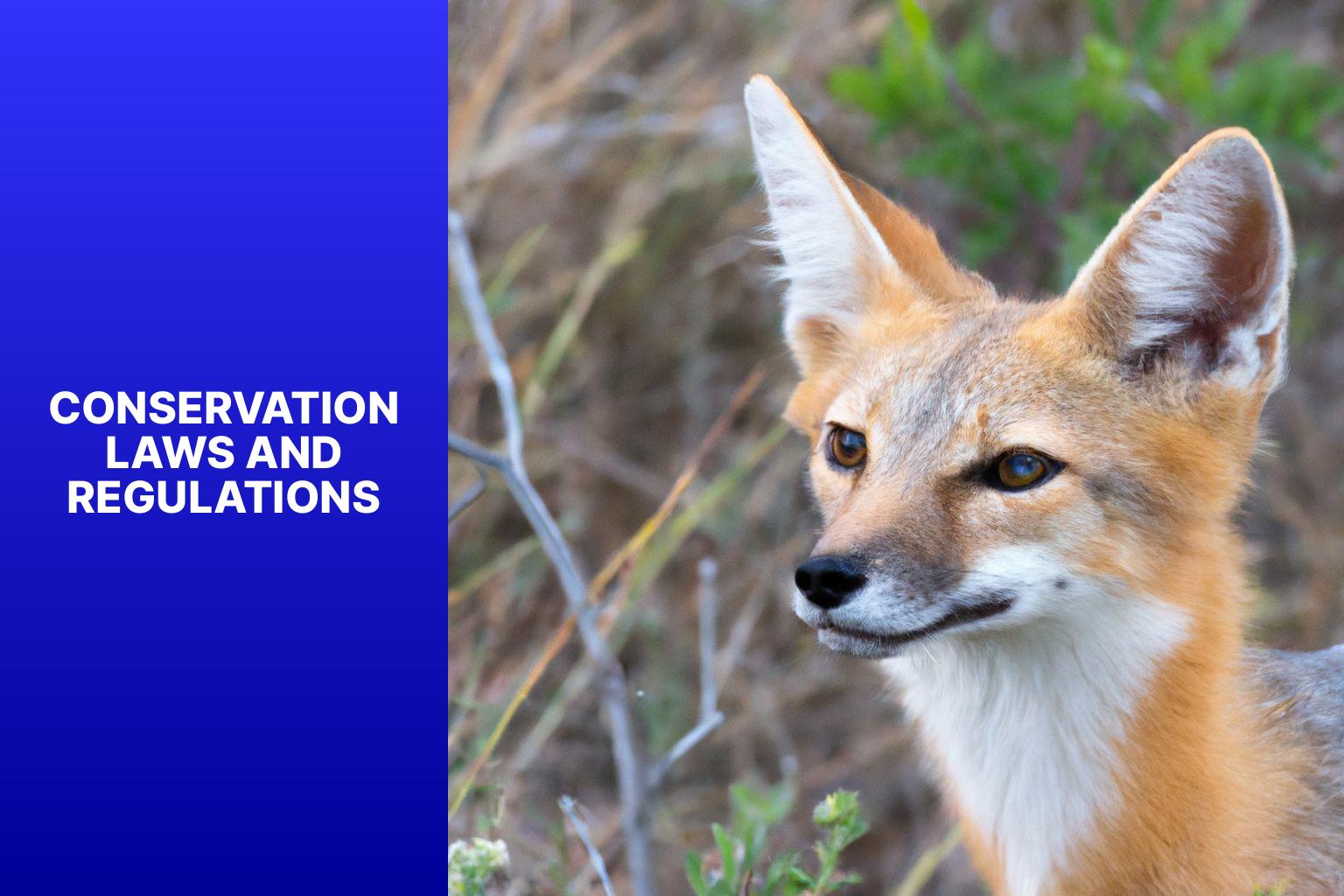The kit fox, a small and elusive species native to North America, is currently facing the threat of endangerment. Understanding the importance of preserving this unique creature and its delicate ecosystem is crucial. This article aims to shed light on the endangered status of the kit fox and the efforts being made to conserve its population.
Let’s have an introduction to the kit fox, exploring its characteristics, behavior, and habitat.
Next, we will delve into what it means for a species to be classified as “endangered” and why the kit fox falls under this category.
Examining the current status of the kit fox, we will analyze its population and habitat trends, including any significant changes that have resulted in its declining numbers.
Identifying the threats posed to the species is crucial in understanding the urgency and importance of conservation efforts. We will highlight the various factors, such as habitat loss, urbanization, predation, and disease, that have contributed to the decline of the gray fox population.
Moving on to conservation efforts, we will explore the measures being taken to protect the habitat of the kit fox. This includes habitat preservation initiatives, restoration programs, and efforts to enhance the quality of the existing habitat.
Reintroduction programs play a significant role in the conservation of endangered species. We will discuss how the kit fox is being reintroduced into suitable habitats and monitored to ensure its successful integration and survival.
Education and awareness are vital components of conservation. We will explore the various educational initiatives aimed at raising awareness about the kit fox, its importance in the ecosystem, and the need for its protection.
Lasty, we will emphasize the role of humans in the preservation of the kit fox. Conservation laws and regulations, as well as individual efforts, play a crucial role in mitigating human-induced threats to the species. We will delve into the existing laws and regulations that protect the kit fox and highlight ways in which individuals can contribute to its preservation, such as reducing human-induced threats and participating in conservation programs.
By understanding the challenges faced by the kit fox and the ongoing conservation efforts, we can work together to safeguard this magnificent species and ensure its long-term survival.
Contents
- 1 Key takeaway:
- 2 What Does “Endangered” Mean?
- 3 Status of the Kit Fox
- 4 Conservation Efforts for the Kit Fox
- 5 The Role of Humans in the Preservation of the Kit Fox
- 6 Conservation Laws and Regulations
- 7 Frequently Asked Questions
- 7.1 What are the primary threats to the survival of the San Joaquin kit fox?
- 7.2 How is habitat loss affecting the San Joaquin kit fox?
- 7.3 What are the impacts of pesticides and rodenticides on the San Joaquin kit fox?
- 7.4 Are there any measures in place to protect the San Joaquin kit fox?
- 7.5 What is the role of the Center for Biological Diversity and Center for Food Safety in protecting the San Joaquin kit fox?
- 7.6 Where can the San Joaquin kit fox be found and what are its physical characteristics?
Key takeaway:
- Introduction to the Kit Fox: The Kit Fox is a species facing endangerment due to various factors.
- Conservation Efforts for the Kit Fox: Steps have been taken to protect the Kit Fox, including habitat protection, reintroduction programs, education and awareness, and reducing human-induced threats.
- The Role of Humans in the Preservation of the Kit Fox: Humans play a crucial role in ensuring the survival of the Kit Fox through conservation efforts and adherence to conservation laws and regulations.
What Does “Endangered” Mean?

Photo Credits: Foxauthority.Com by Alexander Harris
The term “endangered” refers to a classification given to a plant or animal species at risk of extinction in its natural habitat. This classification is based on factors indicating significant population declines and the risk of disappearance. The primary criteria to determine if a species is endangered include population decrease, habitat range reduction, and threats from human activities like pollution, deforestation, and hunting. Scientists and conservation experts study these factors to assess the species and its ecosystem. Importantly, the “endangered” classification is objective and based on scientific evidence and data.
An example that exemplifies the meaning of “endangered” is the Amur leopard. This big cat is one of the world’s most critically endangered species, with less than 100 remaining in the wild. Habitat loss due to human development, poaching for fur, and declining prey populations have pushed these leopards to the brink of extinction. Conservation efforts are underway to protect their habitat, prevent poaching, and increase the population through breeding programs.
The story of the Amur leopard reminds us of the urgency to protect endangered species and their habitats. It showcases the devastating consequences of human actions on ecosystems and emphasizes the importance of conservation efforts for future biodiversity.
Status of the Kit Fox

Photo Credits: Foxauthority.Com by Bryan Scott
The status of the Kit Fox is a matter of concern, with aspects such as population and habitat, as well as threats faced by the species, coming under scrutiny. Delving into the numbers and conditions surrounding the Kit Fox population and its natural habitat, we will shed light on the current situation. We will explore the various threats that pose a risk to the very existence of this incredible species. Brace yourself for some eye-opening facts and insights into the challenges faced by the Kit Fox.
Population and Habitat
The Kit Fox population and habitat can be described using the following table:
The population of the Kit Fox is currently less than 10,000 individuals. They are primarily found in the southwestern United States and northern Mexico, inhabiting various habitats such as desert scrublands, grasslands, and open woodlands. Kit Foxes have adapted to arid and semi-arid environments.
The population and habitat of the Kit Fox face several threats. One of the main threats is the loss of habitat due to urban development, agricultural expansion, and infrastructure projects. These activities destroy and fragment their natural habitats, limiting space for the Kit Fox population.
Kit Foxes primarily feed on small mammals like rodents and rabbits, as well as insects, birds, and plant material.
Protecting the population and habitat of the Gray Fox is crucial for their long-term survival. Conservation efforts should focus on preserving their natural habitats, reducing human-induced threats, and raising awareness about their importance in local ecosystems.
Taking action to protect the Kit Fox population and habitat contributes to the conservation of this endangered species and maintains biodiversity in their respective regions.
Threats to the Species
Threats to the Kit Fox species include habitat loss, predation, disease, and human activities. The loss and degradation of their natural habitat due to urbanization, agriculture, and industrial development have significantly impacted the Kit Fox population. This has led to habitat fragmentation, making it difficult for the foxes to find suitable areas for shelter, food, and breeding.
For further information on the Kit Fox Endangered, please visit a reputed source.
Predators like coyotes and domestic dogs pose a significant threat as they compete for resources and sometimes attack and kill the foxes. Disease, including distemper, rabies, and mange, can have devastating effects on the population, leading to significant declines and even localized extinctions. Human activities such as hunting, trapping, and roadkill also pose threats. Illegal hunting and trapping directly impact the fox population, while roadkill incidents result in fatalities and disrupt connectivity between populations.
To mitigate these threats to the Kit Fox species, it is crucial to protect and restore their habitat, implement predator control programs, monitor and manage disease outbreaks, and raise public awareness about the importance of conserving this endangered species. Suggestions to address these threats include creating protected areas and corridors to preserve their habitat, promoting responsible land management practices, conducting research and monitoring to better understand their population dynamics and health, and fostering community engagement and education programs to enhance public support for Kit Fox conservation efforts.
Conservation Efforts for the Kit Fox
Conservation efforts for the endangered Kit Fox have been crucial in ensuring the species’ survival. From protecting their habitat to implementing reintroduction programs, increasing education and awareness, and addressing human-induced threats, various initiatives have been put in place. These actions aim to preserve the Kit Fox population and promote its long-term sustainability. So, let’s delve into the different aspects of these conservation efforts and explore how they contribute to securing a brighter future for the Kit Fox.
Habitat Protection
Habitat protection plays a crucial role in preserving the Kit Fox population. It involves the conservation and protection of suitable habitats for these endangered animals. Here are several key aspects of habitat protection for the Kit Fox:
1. Preserving natural habitats: It is essential to conserve and protect grasslands, deserts, and shrublands where The Gray Fox resides. This approach helps maintain biodiversity and ensures the necessary resources for their survival.
2. Restoring habitats: Restoring degraded or destroyed habitats is important. This can be achieved by planting native vegetation and creating suitable conditions for food, shelter, and breeding opportunities.
3. Minimizing human encroachment: It is necessary to control urbanization and agriculture expansion that encroaches upon Kit Fox habitats. This step minimizes the impact on their habitat.
4. Controlling invasive species: Managing invasive plant species is vital to prevent negative impacts on Kit Fox habitats and maintain a healthy ecosystem.
5. Collaborating for conservation: Collaboration among government agencies, conservation organizations, and local communities is vital for successful habitat protection. This collaboration leads to comprehensive conservation plans and long-term habitat preservation for the Gray Fox.
Prioritizing habitat protection contributes to the preservation of the critically endangered Gray Fox population and ensures their long-term survival.
Here are some suggestions on how to contribute to habitat protection:
- – Support local conservation organizations through donations or volunteer work.
- – Stay informed about proposed development projects in Kit Fox habitats and advocate for responsible land use practices.
- – Educate others about habitat protection and share tips on minimizing human impacts on wildlife habitats.
Together, we can make a difference in safeguarding the future of the Kit Fox.
Reintroduction Programs
Reintroduction programs are vital for the conservation of the Kit Fox species. These programs have the objective of reintroducing Kit Foxes that have been bred in captivity or translocated into habitats that have been depleted or no longer exist. The goal of conservationists is to establish new populations and increase the overall number of Kit Foxes in their natural habitat.
When implementing reintroduction programs for the Kit Fox, there are several important factors to consider. This includes the selection of appropriate release sites that have an abundance of food sources, safe shelter, and minimal disruptions caused by human activities. It is also crucial to monitor the survival rates, reproductive success, and overall population growth of the reintroduced Kit Foxes. This data plays a crucial role in assessing the effectiveness of the program and making any necessary adjustments.
Successful reintroduction programs heavily rely on the support and involvement of the public. By educating local communities about the importance of the Gray Fox and the reintroduction efforts, a sense of stewardship is fostered. This encourages responsible behavior towards the species and its habitat.
To ensure the long-term success of reintroduction programs, it is crucial to address human-induced threats such as habitat destruction, fragmentation, and roadkills. Measures like creating wildlife corridors, enforcing speed limits near Kit Fox habitats, and promoting responsible land management practices are essential.
In order to achieve these objectives, the following suggestions should be considered:
- Encourage communities to support and participate in habitat restoration projects for the Kit Fox.
- Collaborate with local schools and organizations to organize educational programs and workshops about reintroduction programs.
- Establish partnerships with landowners and ranchers to enhance habitat connectivity and promote responsible land management practices.
- Seek funding from government agencies, non-profit organizations, and private donors to support the implementation and monitoring of reintroduction programs for the Kit Fox.
Education and Awareness
Education and awareness play a vital role in the conservation of the Kit Fox.
1. Spreading awareness about the importance of conserving the Kit Fox and its habitat is essential through education.
2. Schools can introduce lessons and programs that educate students about the ecological significance of the Kit Fox and the various threats it faces.
3. Media platforms such as television, radio, and social media can be utilized effectively for public awareness campaigns.
4. Public talks, workshops, and events can be organized to engage the community and inform them about the conservation status of the Kit Fox and the actions they can take to aid in its protection.
5. Collaborating with local organizations, wildlife rehabilitation centers, and zoos can offer hands-on learning experiences and opportunities to interact with the Kit Fox, fostering a deeper understanding of its needs and challenges.
6. Citizen science programs can involve the public in data collection, monitoring, and research initiatives related to the Kit Fox, instilling a sense of ownership and responsibility for its well-being.
7. Environmental organizations can develop educational materials such as brochures, guidebooks, and online resources to provide easily accessible information about the Kit Fox and its conservation efforts. By engaging individuals through education and awareness, they can become proactive advocates for the Kit Fox and contribute to a broader culture of conservation.
Reducing Human-Induced Threats
Reducing human-induced threats is crucial for preserving the Kit Fox. Education and awareness play a key role in spreading knowledge about the Kit Fox’s importance and the impact of human activities. By educating the public, we can promote responsible behavior and reduce unintentional harm.
Habitat restoration is essential in reducing human-induced threats to the Kit Fox. This involves reducing fragmentation, restoring degraded areas, and ensuring a healthy ecosystem that supports the fox’s needs.
Managing human activities is another important aspect of reducing human-induced threats to the Kit Fox. Implementing regulations and guidelines is necessary to minimize activities that negatively impact the species. This includes limiting development in important habitats, controlling pesticide use, and managing recreational activities that disturb the fox’s behavior.
Strengthening partnerships between conservation organizations, government agencies, local communities, and landowners is critical in reducing human-induced threats. By working together, we can create a unified effort to protect the Kit Fox and minimize threats.
Research and monitoring are vital in understanding specific threats to the Kit Fox population. Through continued research and monitoring, we can identify and study these threats, develop targeted conservation strategies, and evaluate their effectiveness over time.
Reducing human-induced threats requires proactive measures, public awareness, and collaborative efforts. By minimizing our impact on the Kit Fox, we can ensure its long-term survival in the wild.
The Role of Humans in the Preservation of the Kit Fox

Photo Credits: Foxauthority.Com by Douglas Williams
Humans play a vital role in preserving the kit fox, an endangered species. By taking specific actions, we can protect their habitat and ensure their survival. There are several important ways in which humans can contribute to kit fox conservation:
-
Protecting habitat: It is crucial for humans to advocate for protected areas and implement habitat restoration efforts in order to preserve kit fox habitats. By doing so, we can prevent further destruction and provide suitable living conditions for these foxes.
-
Minimizing human impact: To ensure the undisturbed thriving of kit foxes, humans must refrain from engaging in harmful activities such as poaching or unauthorized land development that can lead to habitat loss and disturbance. Respecting their environment is fundamental.
-
Promoting sustainable land use: Supporting responsible land use practices that conserve kit fox habitats is essential. This involves endorsing local regulations and initiatives that promote sustainable agriculture and land management techniques, ultimately benefiting the fox populations.
-
Supporting research and monitoring efforts: Humans can actively contribute to kit fox preservation by funding scientific research and participating in citizen science initiatives. These efforts provide valuable data that aids in understanding and protecting kit fox populations.
-
Raising awareness: Educating others about the ecological significance of kit foxes and the threats they face is crucial for garnering support for conservation efforts. By raising awareness, more people will be inclined to contribute to the cause.
With collective human efforts, we can ensure the long-term survival and well-being of kit fox populations. It is our responsibility to protect this species and maintain ecosystem balance.
Conservation Laws and Regulations

Photo Credits: Foxauthority.Com by Kyle Anderson
Conservation laws and regulations play a critical role in protecting endangered species like the Gray Fox. These laws are put in place to prevent harm and ensure the survival of these vulnerable species.
One key aspect of conservation laws is habitat preservation. These laws aim to protect and preserve the natural habitats of endangered species. This includes safeguarding nesting and breeding grounds, ensuring access to sufficient food resources, and maintaining ecological balance.
Another important aspect is the prohibition of hunting. Conservation laws strictly prohibit hunting or capturing endangered species. This measure is implemented to prevent population decline and allow species to recover.
Conservation laws also address the issue of international trade regulations. Many endangered species are highly sought after in international markets, leading to illegal wildlife trafficking. To counter this, conservation laws restrict trade to prevent exploitation and endangerment.
Penalizing violations is another crucial element of conservation laws. These laws enforce penalties for illegal hunting, habitat destruction, and trade in endangered species. These penalties act as deterrents and ensure adherence to regulations.
Conservation laws promote collaborative efforts. They encourage collaboration between government agencies, conservation organizations, and local communities to protect and conserve endangered species. This collective effort enhances the effectiveness of conservation measures.
Frequently Asked Questions
What are the primary threats to the survival of the San Joaquin kit fox?
The primary threats to the survival of the San Joaquin kit fox are habitat loss due to agricultural, urban, and industrial development in the San Joaquin Valley, as well as the use of pesticides and rodenticides that reduce the fox’s prey base and harm the foxes themselves.
How is habitat loss affecting the San Joaquin kit fox?
Habitat loss is a significant threat to the San Joaquin kit fox. Agricultural, urban, and industrial development in the San Joaquin Valley has led to the fragmentation of the fox’s habitat and the degradation or blocking of movement corridors. Only a few large areas of native grasslands remain, which limits the fox’s habitat.
What are the impacts of pesticides and rodenticides on the San Joaquin kit fox?
Pesticides and rodenticides are toxic substances that harm the San Joaquin kit fox. These substances are expelled through intensive agricultural use, industrial and infrastructure projects, and residential areas in the Central Valley. The reduction of the fox’s small-mammal prey base by rodenticides not only kills the fox’s prey but can also harm the foxes themselves when these toxic substances build up in their bodies.
Are there any measures in place to protect the San Joaquin kit fox?
Efforts have been made to protect the San Joaquin kit fox. It was federally listed as an endangered species in 1967 and listed by California four years later. There have been petitions, lawsuits, and reports highlighting the need to protect the fox and its habitat. Critical habitat has not yet been designated for the fox despite a petition filed in 2010.
What is the role of the Center for Biological Diversity and Center for Food Safety in protecting the San Joaquin kit fox?
The Center for Biological Diversity and Center for Food Safety have actively fought for the safety of the San Joaquin kit fox. They have filed lawsuits challenging the approval of development projects that would destroy the fox’s habitat. Their efforts aim to protect the fox from habitat destruction and the use of toxic pesticides in its environment.
Where can the San Joaquin kit fox be found and what are its physical characteristics?
The San Joaquin kit fox can be found in the San Joaquin Valley in California, from San Joaquin County in the north to Kern County in the south. It also extends to valleys along the Coast Range. The fox is small and tan, with a narrow nose, a small, slim body, and a bushy, black-tipped tail. It has large, close-set ears that aid in heat dissipation, as it is specially adapted for its desert habitat.


